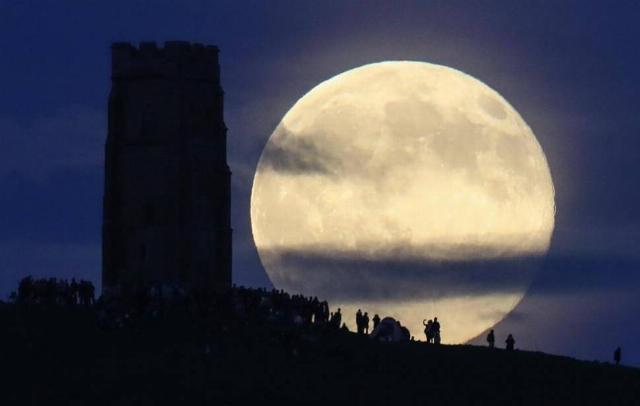According to the researchers, there are currently virtually no telescopes in Russia capable of performing observations at frequencies above 100 GHz
MOSCOW, April 1. /tass/. Russian astronomers have proposed building a telescope on the surface of the moon that would operate in the sub-terahertz range of electromagnetic waves. Such an installation will allow scientists to obtain detailed images of the surroundings of black holes and for the first time study in detail the motion of matter at the event horizon. This was announced on Monday by the press service of the FIAN Astrocosmic Center.
"The lunar antenna array, working in conjunction with a ground-based network of telescopes, will allow us to view the shadows of black holes with a resolution up to 30 times better than the EHT telescope did. This will lead to a breakthrough in the study of the physics of supermassive black holes. The lunar observatory will also explore the early universe through observations of spectral distortions of relic radiation and study some problems of star formation," the report says.
The idea was put forward by a group of Russian astronomers led by Sergey Likhachev, head of the FIAN Astrocosmic Center, as part of a comprehensive study of further prospects for the development of subterahertz astronomy in Russia. Within its framework, astronomers use electromagnetic waves with a frequency of hundreds of gigahertz and higher to observe the most distant and unusual objects in the Universe, including supermassive black holes, their ejections, the first galaxies of the universe and other celestial bodies.
According to the researchers, there are currently virtually no telescopes in Russia capable of performing observations at frequencies above 100 GHz, and at the same time, only one such orbital mission, the Millimetron space Observatory, is planned to be launched. Guided by similar considerations, Likhachev and his colleagues have prepared designs for terrestrial and lunar subterahertz telescopes that could make up for the lack of observational power in this range of electromagnetic waves.
In particular, scientists propose to develop a set of six antennas with a diameter of 8 m, capable of detecting sub-terahertz radiation, and install them on Mayak Mountain in Dagestan or on Hulugaisha Peak in Sayan Mountains. A similar set of antennas can also be installed on the surface of the Moon in a permanently shaded crater or in the circumpolar regions of the Earth's satellite. According to astronomers, this lunar observatory can also be combined into a giant virtual antenna along with their terrestrial counterparts and space observatories, which will use technologies that were previously involved in the Radioastron project.
This approach, scientists hope, will allow astronomers to trace for the first time the movement of matter in the very immediate vicinity of supermassive black holes, including the Sgr A* black hole located in the center of the Milky Way. Similar images can be presumably obtained for the black hole in the galaxy M87, whose "shadow" was recently studied by scientists using the EHT telescope, combining the capacities of the largest subterahertz observatories in the world. These images will radically expand scientists' understanding of the behavior of matter at the event horizon, the researchers concluded.
About lunar telescopes
In recent years, astronomers from Russia and other countries of the world have been actively proposing to start placing telescopes and observatories not only in space, but also on the surface of the Moon. Their construction will circumvent the restrictions imposed by the Earth's atmosphere, as well as protect telescopes from anthropogenic light and electromagnetic interference. In particular, in April 2021, Lev Zeleny, scientific director of the Institute for Space Research of the Russian Academy of Sciences (RAS), proposed placing a special telescope on the surface of the Moon aimed at searching for sources of high-energy cosmic rays - charged particles moving at near-light speed.

